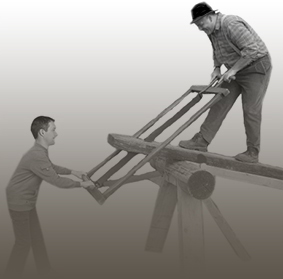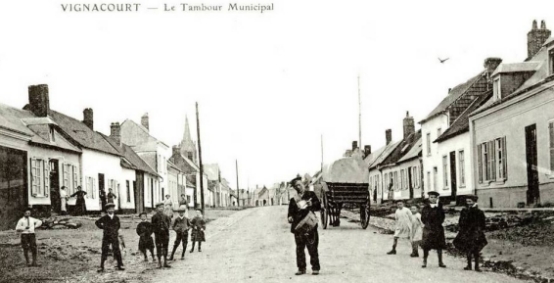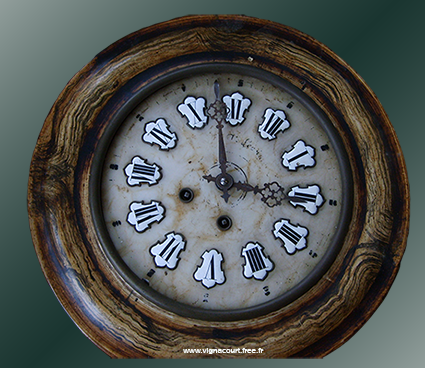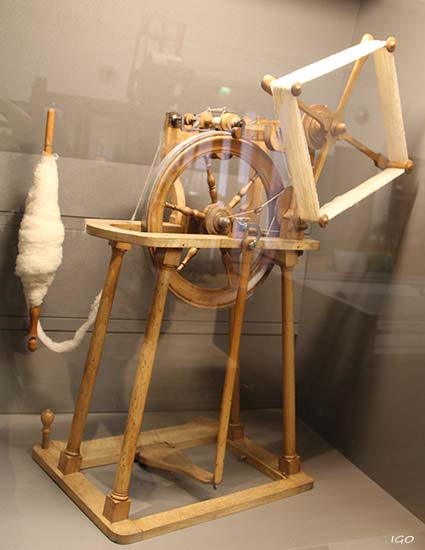Home > Economy > Traditional trades
Traditional trades
Among the traditional professions, we find those related to food, animal breeding, and the tilling of land. Construction activities included masons, lumberjacks, carpenters, tilemakers, and bricklayers.
The merchants held a trade or worked with local producers to resell the goods in the markets. Others specialized in confections and crafts.
![]()
Baker: The baker began his day at dawn by lighting the fire to obtain the right temperature. He could then concentrate on making the bread dough, kneading it, and putting the various preparations in the oven. The neighbors came later to take advantage of the bread oven's heat for pies and cakes.
Blacksmith farrier: The noise of the hammer echoed on the anvil, and some parts must be heated multiple times to bring them into shape. He made horseshoe pieces and parts for draft animals. Mr. Caron's forge, in the photo below, was located close to Follemprise Street. He was not the only blacksmith.

The blacksmith is on the right, and the municipal drum is on the left. Photo credit: private collection.
Brewer: He made beer in the craft brewery. The French word is brasseur, which refers to beer, from the German word Bier. The old term was cervoisier, with Latin roots like cerveza, the Spanish word for beer that matched the ale for English people.
Carpenter:This wood craftsman manufactured and carried out the assembly of the frame and the complete structure of the house previously. He worked for castles, like the Picquigny castle, to realize a wooden fence. (15th century).
Carrier: He ensured the carriage of goods by road or inland waterway.
Cartwright: He manufactured carriages in his workshop, as well as wheels.
Cooper: A cooper's job was to make barrels of various sizes. He was hammering the wood barrel around the fire during the strapping.
Day laborer: Many of us had ancestors who worked as day laborers. The French word refers to the "journal". This agrarian measure corresponds to the field a man could cultivate with a plow.
Forewoman: Miss Gente carried out this occupation in the fishing net factory; it was still relevant in 1947. She had the function of supervising a production unit.
Gatekeeper: The gatekeeper job still existed after 1918. The railroad crossing was under constant surveillance.
Hatter: The milliner handcrafted and sold hats, and she took inspiration from the fashion of big cities. She handcrafted custom parts for each client, including hats, caps, berets, bonnets, and many pieces for children.
Hawker: Fresh produce was sold to the market (eggs, poultry, and vegetables) and possibly preparations like pancakes.
Horticulturist: He grew ornamental plants, flowers, and vegetables. The "Hortus" prefix comes from Latin, meaning garden. Mr. Cavaillon had worked as a horticulturist for 45 years with passion and had received numerous awards. He lived on the street "d'Hornas" before the First World War. His father was a farmer in the nearby village of Vaux-en-Amiénois.
Innkeeper: owner of a small hostel or tavern where we could eat and sleep. (19th century).
Locksmith: The manufacturer of locks worked the metal.
Lumberjack: The person in charge of cutting down and hauling away trees in the forest. He worked mainly for carpenters.
Merchants: The sales professionals but not only.
Merchants of calves, chickens, cockerels, pigs, poultries, and so on: Farmers sold these animals after having raised them in the open air, and the merchants got their supplies in the villages and resold the poultries in the cities.
Fabric merchant: They traded in Indian fabrics, mainly from the city of Rouen, as well as other fashionable fabrics.
Fishmonger: A wholesaler who buys fishing products in the port and then resells them to individuals.
Linen draper: He grew the flax and sold it to the local manufacturers as the maker of linen bags or to the twisting companies.
Hide trader: He bought the skins of animals from the farmers. Its task was to clean them, treat them (tanning), cut them, and resell them.
Greengrocer: He got his vegetables from his garden as well as from local growers and wholesalers.
Miller: His job was to make flour or oil and operate a mill that he may not have owned.
Ornamental metalworker: manufacturer of iron objects such as the pieces that adorn the beautifully crafted church lighting.
Pitsawyers: This is cutting the trees lengthwise, but two people are needed to hold the tool. There were a significant number of carpenters to supply.

Roofer: This craftsman laid tiles for roofs and laid the frame. These roofers made thatched roofs in ancient times (again in the 18th century).
Rope-maker: He made ropes at home or in small local units.
Rural guard: He was a communal police officer. His job was to guard rural properties, provide local security, and manage offenders. The municipal drum was also the term used to designate this profession because, after the revolution, he was responsible for informing the population by making announcements in the streets with his drum.

The Vignacourt municipal drum.
Saddlers: This craftsman worked leather. He manufactured harnesses for draft animals and straps.
Shepherd: The shepherd took care of the sheep. He used to take the herd to the grazing area and guide them with help from the dogs, who always went to fetch the sheep that strayed away.
Shoemaker: He had to repair the shoes, mainly the soles. A pair of shoes is an investment to maintain for as long as possible.
Stonemason: He specialized in stone carving and the sculpture of ornamental elements. This trade was not widespread, but there were still a few stonemasons in 1900.
Surveyor: The French word arpenteur was the old term used for the profession of a surveyor, which referred to the arpent, the old agrarian measure. He delimited the ground and measured the area of the buildings.
Tile-maker: He manufactured roof purlins or tiles. He prepared the mixture of materials. Then he shaped them in the mold, dried the pieces, and fired them.
Watchmaker: The knowledge was passed on from generation to generation, from father to son. The clock was offered as a gift to the newlyweds. This job required meticulousness, practice, and theoretical knowledge.

A clock manufactured in Vignacourt.
Weaver: Manufacturer of silk or woolen fabrics. For home workers, the work lasted several hours.
Weaver for wool socks: The French word for this job was "Badestamier" in connection with the word "estaim" for wool, the wool socks maker. These weavers were few in the village. It was a regulated profession, authorized in the region of Amiens in 1700.
Wheelwright: In the same way that the carpenter worked wood and iron by the blacksmith, he built carts, wheelbarrows, and wheels for these vehicles, as well as farmers' tools such as the plow, the harrow, and the roller.
Wood-turner: This craftsman used a hand turn. (18th century).
Wool spinner: This person worked with a spinning wheel activated by the central pedal to free the hands to spin the wool.

The spinning wheel.
